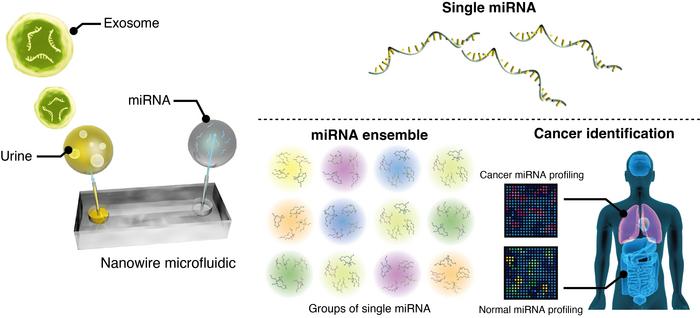Summary: Scientists have developed a non-invasive cancer detection method using zinc oxide nanowires to capture and analyze micro-RNAs in urine. The technique, combined with machine learning, successfully identified lung cancer patients with high accuracy, potentially revolutionizing early cancer diagnosis.
Analytical Chemistry, October 18, 2024, DOI: 10.1021/acs.analchem.4c02488 | Reading time: 4 minutes
Early cancer detection remains one of medicine’s most crucial challenges, with delayed diagnosis often leading to poor outcomes. Now, researchers from the Institute of Science Tokyo have developed a promising new approach using sophisticated nanotechnology to detect cancer through a simple urine test.
A Microscopic Detective Story
The research team, led by Professor Takao Yasui, focused on detecting micro-RNAs (miRNAs) – tiny molecules that cancer cells use to promote tumor formation. “Circulating miRNAs in the blood are mostly encapsulated in extracellular vesicles and carry critical regulatory information,” Yasui explains. These miRNAs differ between healthy individuals and those with cancer.
Using zinc oxide nanowires, the researchers captured and analyzed these molecular markers from urine samples. The technique proved remarkably thorough, identifying 2,486 different miRNA species across 200 urine samples.
Machine Learning Makes the Diagnosis
The team employed machine learning to identify specific patterns in the collected miRNAs. Their analysis revealed a particular ensemble of 53 miRNA species that could accurately distinguish between cancer and non-cancer patients.
“We also identified another urinary miRNA ensemble that could accurately detect stage-I lung cancer,” Yasui notes, highlighting the technique’s potential for early detection. This capability could transform cancer diagnosis by enabling earlier intervention and improving patient outcomes.
Glossary of Terms
- Micro-RNA (miRNA): Small molecules that regulate gene expression
- Extracellular Vesicles: Tiny structures that carry molecular information between cells
- Nanowires: Extremely thin wires made of zinc oxide used to capture molecular markers
- Machine Learning: Computer systems that can learn and identify patterns in data
Test Your Knowledge
How many different miRNA species did researchers identify in their samples?
2,486 species
What material were the nanowires made from?
Zinc oxide
How many miRNA species were in the ensemble that distinguished cancer patients?
53 species
How many urine samples were analyzed in the study?
200 samples
Enjoy this story? Get our newsletter! https://scienceblog.substack.com/


